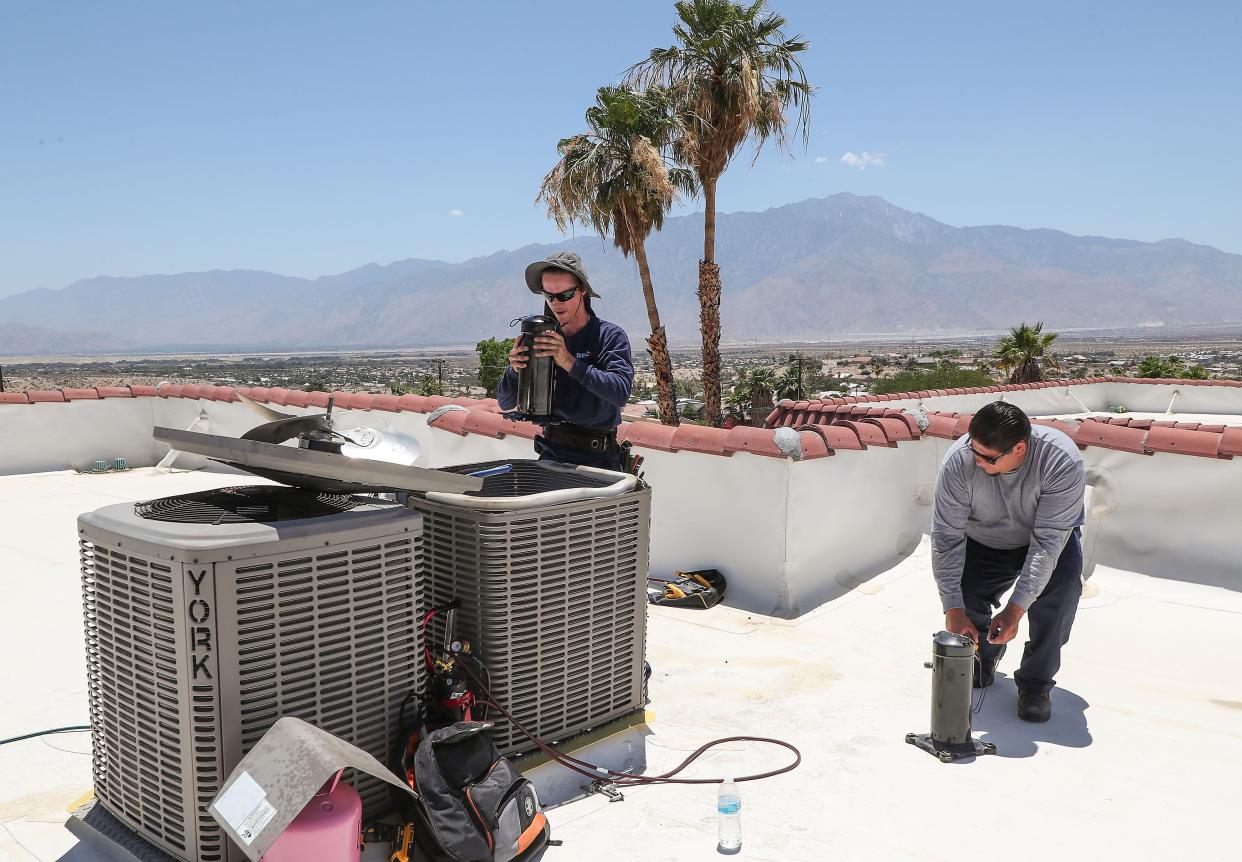This summer was the Coachella Valley's second-hottest on record

Only two daily maximum temperature records were broken, but this summer was still the second-hottest on record in the Coachella Valley, with an average temperature of 93.9 degrees from June through September so far.
The culprit wasn't record-breaking high temperatures like last summer, but higher-than-normal low temperatures at night time, which drove up the average temperature over the summer, according to the National Weather Service.
Last summer was the hottest recorded since the historical temperature record began a century ago in 1922. A total of eight daily maximum temperature records were broken, and on June 17, 2021, Palm Springs hit 123 degrees, tying the record for the hottest day ever.
This summer only saw two temperature records fall: on June 11 the temperature reached 114, and this week's late-September heat wave set a new record of 111 on Sept. 26. While that was technically in fall, notably, the mercury never hit 120 degrees.
But even with the lack of record-shattering highs or temperatures that neared 120, this summer came in a close second to last summer in terms of the average temperature. The average temperature from June through late September 2022 was 93.9 degrees, just slightly below the all-time high of 94 degrees last year.
Hottest June-September periods in Coachella Valley history:
2021, average temperature of 94 degrees
2022, average temperature of 93.9 degrees
2018, average temperature of 93.5 degrees
2020, average temperature of 93.4 degrees
2017, average temperature of 92.5 degrees
All of the top five hottest summers occurred in the past six years as climate change drives up average temperatures, and it's only getting hotter. Climate change is expected to push average high temperatures in the Coachella Valley up by 8 to 14 degrees by the end of this century, according to a state assessment of climate change in the Inland Deserts region.
'Still pretty darn hot'
This summer's high average temperature wasn't driven by daily highs, but by higher-than-normal nighttime and morning low temperatures. In August, 30 out of 31 days saw a minimum temperature that was higher than normal, and 25 of those days had a minimum temperature between 5 and 11 degrees hotter than normal. Meanwhile, just 11 days experienced a maximum temperature that was hotter than normal.
"It's really the warm morning and warm low temperatures that certainly helped keep the temperature elevated so that it was hotter in generally, not necessarily approaching the 120s, but this is still a pretty darn hot average," said meteorologist Brian Adams with the National Weather Service's San Diego office.
According to Adams, this summer's monsoon season played a large role in this, with the warm moist air "mitigating how far the temperature will drop overnight."
"Not to mention how the temperature is already starting from a really, really high point during the day to try and fall overnight. So you kind of had those two working in conjunction, if it starts off at such a high point, it can only fall so much. And that additional moisture in place also kind of mitigates how far the temperature will actually be able to drop," Adams said.
Temperatures nearing 120 typically occur on days with drier air, and often include a component of wind coming down off the mountains that "basically pushes dry air down off the mountains and compresses it, which really makes (the temperature) skyrocket," Adams said.
And the Coachella Valley wasn't the only region to experience higher-than-normal nighttime temperatures. California, Idaho, Nevada, Oregon and Washington each ranked warmest on record for their August nighttime temperatures.
Climate change is warming nighttime temperatures faster than daytime temperatures, according to the Union of Concerned Scientists, which raises concerns over health impacts because warmer nights mean people have less time for their bodies to cool down after scorching days.
Across the contiguous U.S., the change in the annual average minimum temperature between 1901-1960 and 1986-2016 was 1.41 degrees, compared to 1.06 for the average maximum temperature
Erin Rode covers the environment for the Desert Sun. Reach her at erin.rode@desertsun.com or on Twitter at @RodeErin.
This article originally appeared on Palm Springs Desert Sun: Coachella Valley temperatures made this summer second-hottest on record

